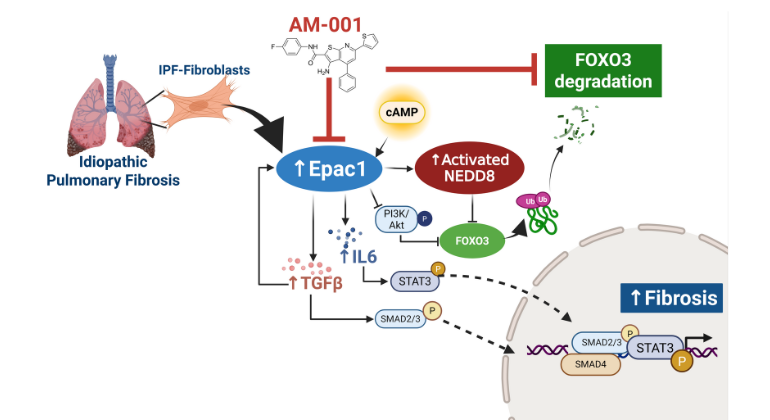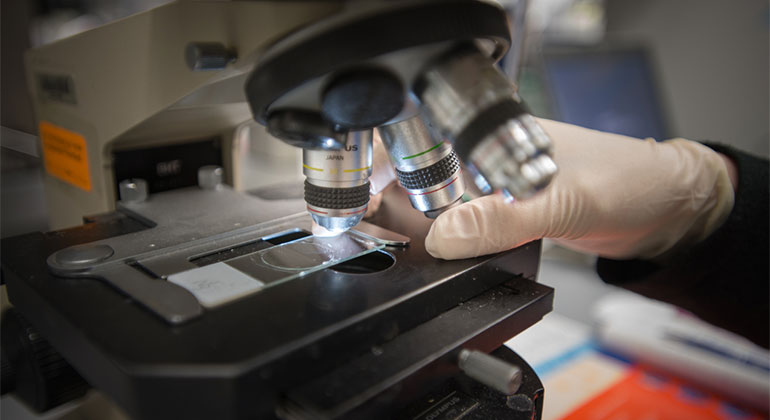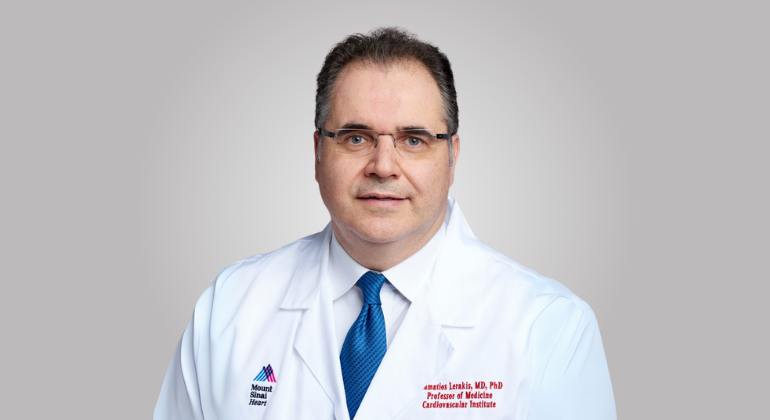Researchers Identify a Population of Cells Linked to the Development of the Heart’s Ventricular Chambers
{Click here for an image of the heart showing the four-chambered structure with atria at the top and ventricles at the bottom.} @MountSinaiNYC @MindichCHDI
A population of cells in early development may give rise to the ventricular chambers of the heart, but not the atria, according to a study led by researchers from the Mindich Child Health and Development Institute at the Icahn School of Medicine at Mount Sinai and published today in Nature Communications.
Congenital heart defects are the most common type of birth defect, affecting 35,000 babies in the United States each year, according to the U.S. Department of Health and Human Services. Many of these defects originate as the heart chambers are forming. While much is known about the development of the heart, the formation of the four distinct chambers of the heart has lacked thorough understanding.
Using a model that traces cell lineage in mice, investigators studied the protein-coding gene Foxa2, primarily associated with endoderm and ectoderm development during embryogenesis. They discovered a population of progenitor cells expressing Foxa2 during early development that gave rise to cardiovascular cells of both the left and right ventricular chambers, but not the atria. Their research showed that atrial-ventricular segregation may occur long before the morphological establishment of differentiated cardiac structures.
“An in-depth understanding of the formation of the heart chambers will enable us to better comprehend the biology behind detrimental heart defects and how best to address them,” said lead investigator Nicole Dubois, PhD, Assistant Professor in the Department of Cell, Developmental and Regenerative Biology at the Icahn School of Medicine at Mount Sinai. “In addition to informing our understanding of early heart development, we hope that these findings will also lead to new protocols for the generation of ventricular cardiomyocytes in cell culture that could potentially be used in therapeutic settings.”
“There is a lot we still don’t understand about this population, or the function of Foxa2 during the formation of the heart, but we think these findings provide a powerful new system to answer some of the most relevant open questions about how early heart development occurs,” said Evan Bardot, PhD student and first author of the Nature Communications study.
The National Institutes of Health (NIH/NHLBI) and the Mindich Child Health and Development Institute supported this research.
About the Mount Sinai Health System
Mount Sinai Health System is one of the largest academic medical systems in the New York metro area, with 48,000 employees working across seven hospitals, more than 400 outpatient practices, more than 600 research and clinical labs, a school of nursing, and a leading school of medicine and graduate education. Mount Sinai advances health for all people, everywhere, by taking on the most complex health care challenges of our time—discovering and applying new scientific learning and knowledge; developing safer, more effective treatments; educating the next generation of medical leaders and innovators; and supporting local communities by delivering high-quality care to all who need it.
Through the integration of its hospitals, labs, and schools, Mount Sinai offers comprehensive health care solutions from birth through geriatrics, leveraging innovative approaches such as artificial intelligence and informatics while keeping patients’ medical and emotional needs at the center of all treatment. The Health System includes approximately 9,000 primary and specialty care physicians and 10 free-standing joint-venture centers throughout the five boroughs of New York City, Westchester, Long Island, and Florida. Hospitals within the System are consistently ranked by Newsweek’s® “The World’s Best Smart Hospitals, Best in State Hospitals, World Best Hospitals and Best Specialty Hospitals” and by U.S. News & World Report's® “Best Hospitals” and “Best Children’s Hospitals.” The Mount Sinai Hospital is on the U.S. News & World Report® “Best Hospitals” Honor Roll for 2025-2026.
For more information, visit https://www.mountsinai.org or find Mount Sinai on Facebook, Instagram, LinkedIn, X, and YouTube.

AI Could Help Emergency Rooms Predict Admissions, Driving More Timely, Effective Care
Aug 11, 2025 View All Press Releases
“Forever Chemicals” Linked to Higher Risk of Type 2 Diabetes
Jul 22, 2025 View All Press Releases
Like Humans, AI Can Jump to Conclusions, Mount Sinai Study Finds
Jul 22, 2025 View All Press Releases
Mount Sinai Researchers Engineer Rare Immune Cells to Create Powerful New Cancer Vaccine
Jul 21, 2025 View All Press Releases
Blocking a Little-Known Protein May Offer New Hope for Devastating Lung Disease
Jul 15, 2025 View All Press Releases



